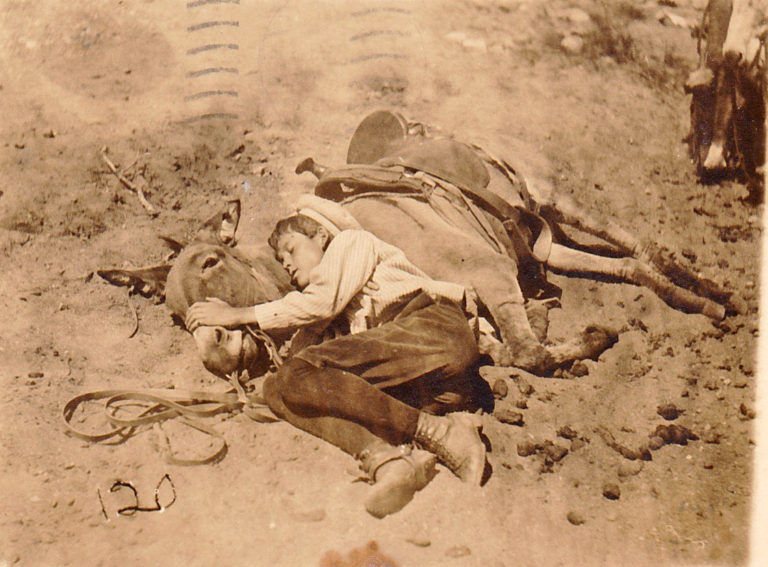The couple mailed this card to Frank Southworth in Wood River, Nebraska, on July 17, 1911. They wrote: “Dear Frank, Taken in the Garden of the Gods. Balanced Rock and Steam Boat Rock. Supposed by this time you would write us a long letter. Have you had any rain? Tell your (?) to write to us. Had a big rain today.” I can’t make out their signatures.
One of the first things I noticed about the wagon was the nicely painted sign on the side identifying York, Nebraska. (York sits about 50 miles west of Lincoln.) I wonder if this was part of some commercial signage on the wagon, which, for example, might be completely visible when you close the side door of the wagon. Or maybe they’re just proud of their hometown.
The open side door reveals what appears to be bedding. Note the dog peeking out from the front. The wagon doesn’t look very big – I wonder if they have food packed in there? The distance from York to the Garden of the Gods is over 500 miles. According to the all-knowing Google, one could expect to cover 10 to 20 miles per day in a horse-drawn wagon, depending on terrain, weather, etc. I think it’s safe to assume there were far more roads in place for their journey than there were when the pioneers came west, so maybe they could have topped 20 miles per day. In any event, at 20 miles per day, this couple’s trip from York to the Garden of the Gods, would have required at least 25 days of travel. (lt’s interesting to note that, in 1911, the year this postcard was sent, the idea of a transcontinental highway in the U.S. was getting a lot of attention.)
Note the presence of the horse fly nets, also called capes, draped over the backs of the horses. Made of leather strips and netting, the horse’s movements created motion in the hanging strips to discourage flies from landing, a most humane measure during fly season. Current-day nets are constructed of nylon webbing and cord.
This picture reminds me that tourists were around even in horse and wagon days!
REFERENCES:
– Distance Between Cities at https://www.distance-cities.com/distance-york-ne-to… and http://www.distance-cities.com/distance-york-ne-to…
– The National Old Trails Road, Part 1: The Quest for a National Road, by Richard F. Weingroff, at https://www.fhwa.dot.gov/infrastructure/trails.cfm
– The Oskaloosa (Iowa) Herald, dated June 3, 2015, at https://www.oskaloosa.com/…/article_f81fade0-09fa-11e5….
– Weaver Leathercraft at https://www.weaverleathersupply.com/…/harness/whips…


